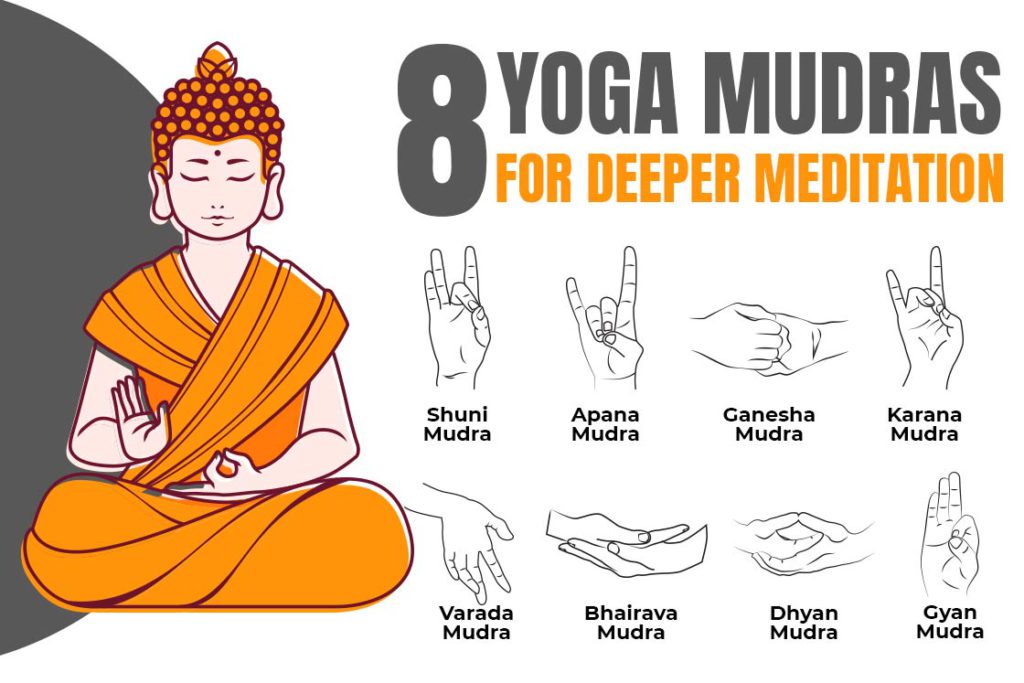What are Mudras in Yoga?
Mudras are symbolic hand gestures that have been used for centuries in various cultures, especially in Hindu and Buddhist traditions. These gestures are often employed during meditation, yoga, and in traditional dance forms. Each mudra is believed to have specific physical, mental, and spiritual benefits. Here are some common mudras and their purported benefits:
Ayurveda and Mudras: -
Ayurveda says about the body is made up of five elements ie. Fire, Water, Air, Soil and Space. A healthy body can control all these elements by balancing them; also a dominant weak element can imbalance our body and have a negative effect / impact on health. After this we would call it illness or disease.
We have five fingers that carry all these five elements each. According to yoga philosophy, each finger runs as a prana for each element. By manipulating the prana we can increase or decrease the prana in our specific part of the body. That's why mudra is represented as a seal.
Mudras can be denoted as” We are sealing or locking the pranas for our specific purposes”.
These pranas help us to restore all these five elements in our body.
Represents of fingers: -
1. Gyan Mudra (Knowledge Mudra): -
Gesture: Touch the tip of the thumb to the tip of the index finger, while keeping the other three fingers straight.
Benefits: Enhances concentration, memory, and promotes spiritual knowledge.
2. Prithivi Mudra (Earth Mudra): -
Gesture: Touch the tip of the ring finger to the tip of the thumb, while keeping the other fingers straight.
Benefits: Increases stability, reduces stress, and promotes a sense of security.
3.Varun Mudra (Water Mudra): -
Gesture: Touch the tip of the little finger to the tip of the thumb, while keeping the other fingers straight.
Benefits: Balances the water content in the body, relieves dehydration, and improves skin health.
4. Apana Mudra (Energy Mudra): -
Gesture: Join the tips of the thumb, middle finger, and ring finger while keeping the index and little fingers straight.
Benefits: Aids digestion, eliminates toxins, and helps in maintaining a healthy urinary system.
5. Vayu Mudra (Air Mudra): -
Gesture: Bend the index finger to touch the base of the thumb while keeping the other fingers straight.
Benefits: Reduces excessive air in the body, alleviates joint pain, and enhances mobility.
6. Shuni Mudra (Saturn Mudra):-
Gesture: Join the tip of the middle finger and the tip of the thumb.
Benefits: Enhances patience, discipline, and focus. It is associated with the planet Saturn.
7. Anjali Mudra (Salutation Seal): -
- Gesture: Bring the palms together in a prayer position.
- Benefits: Promotes a sense of balance, unity and humility. Often used as a gesture of greetings or respect.

